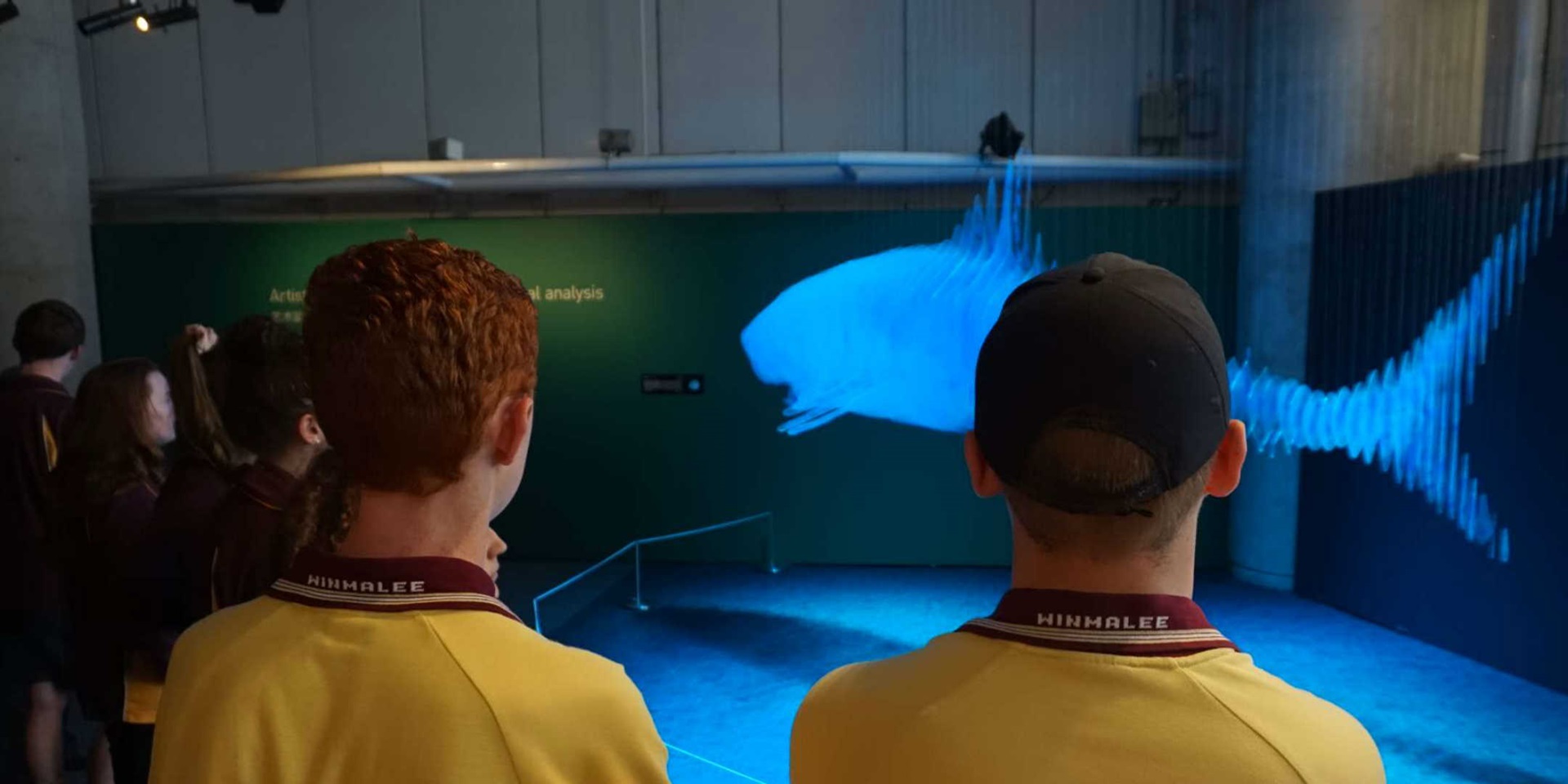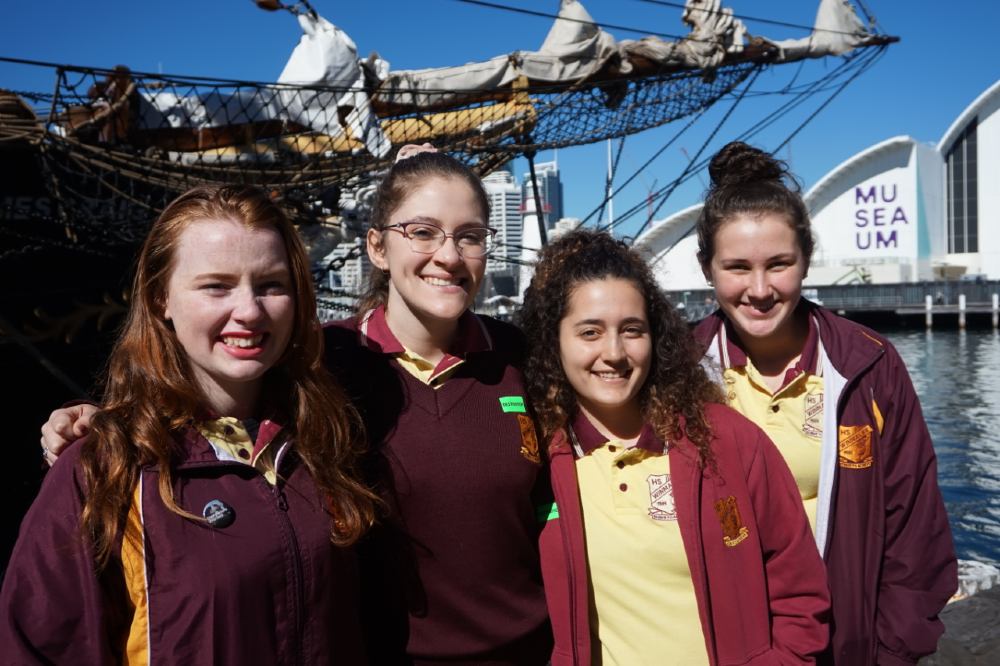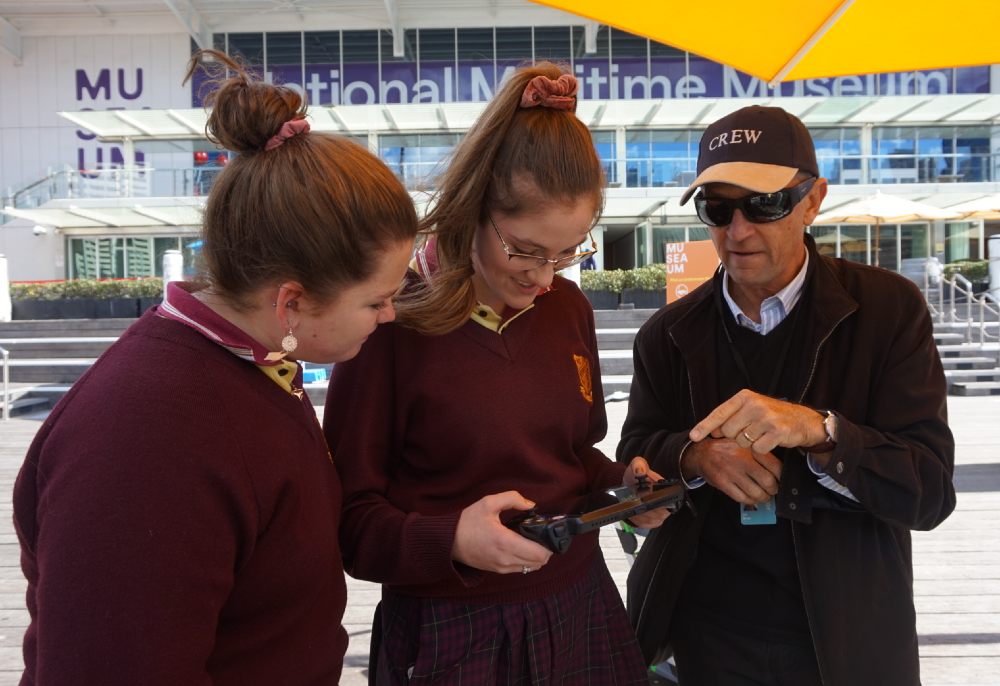
We are collaborating with selected schools in the Blue Mountains to host aspiring young science communicators in a pilot STEAM peer-mentoring program. Back in May, Stage 5 students from Winmalee High School participated in the program's first stage and learnt about the STEAM programs on offer at the museum, drove underwater drones around Sydney Harbour, and explored some of our vessels.

Students from Winmalee High School before boarding the tall ship James Craig
The two days consisted of education programs centred on investigative science and task-based learning – encompassing both permanent galleries and temporary exhibition spaces. This included:
- Life aboard a tall ship – an immersive experience on the 1874 cargo ship James Craig
- All Aboard – a critical thinking workshop developed in collaboration with the Australian Maritime Safety Authority that focuses on safety at sea
- Museum Highlights tour – students gain an overview of the museum's diversity by exploring exhibitions related to Indigenous communities, migration, defence and leisure.
- Investigating Sustainability: Ocean Science and Health – this workshop included elements from our upcoming program that asks questions focused on the health of our oceans and what we can do to help. It also covered buoyancy, gravity, density, corrosion, the Archimedes principle and navigation
- Junior Maritime Archaeology tour – students explore the theme of 'piecing together the puzzle' through a hands-on workshop and a tour of related shipwreck material
- Underwater drone challenge – piloting ROVs to discover what really lies below the surface in Pyrmont Bay. (Coincidentally, after test driving the ROVs themselves, the Blue Mountains City Council intend to use them to remotely monitor the health of Glenbrook Lagoon).

Students from Winmalee High School taking part in the underwater drone challenge
One of the museum's objectives is to share the national maritime story across Australia. All too often, maritime stories are contained within coastal communities – ignoring the links that connect the mountains to the sea. The aim of this program is to share and understand connections with our oceanic and riverine waterways and to do this through peer-mentoring. By delivering the learning programs to secondary students, they then rework the programs for delivery to primary students and the wider community. After all, 'students learn a great deal by explaining their ideas to others'. [1]
This peer mentoring Maritime Science program aims to activate and inspire the next generation to go full STEAM ahead! It empowers year 9 and 10 students to use their scientific knowledge to answer questions like, 'What do sea turtles and submarines have in common?' and for primary school students to kinaestheticlly learn through handling museum objects.
Students were able to move from answering questions such as, 'how do big metal ships like Vampire float?' To using a floating candle to articulate why Titanic sank in terms of the difference in density between water and ice, even correctly guessing in decimal terms the density of oil given that oil floats on water
The first stage of the program is now complete, with the high school students working on translating their experiences into programs for primary students. Additional funding has been sought to support a public access day in the Blue Mountains so that the students can share their new knowledge with parents, friends and the public. If successful, it is hoped that the Maritime in the Mountains program can be further developed to engage with regional science hubs across New South Wales.
We very much enjoyed our visit. From a teacher perspective it was great to see the wonderful and innovative work the museum has embarked on. From a student perspective it was great for this group of students to see the world through a multidisciplinary lens. The students remarked that it was as if they had science, history and art class at the same time.
References
[1] David Boud, 'Making the move to peer learning', in D Boud, R Cohen & J Sampson (eds.), Peer Learning in Higher Education: Learning from and with each other, London, Kogan Page (now Routledge), pp 1-20.
This article originally appeared in the Inspiring Australia Newsletter, 28 May 2019
